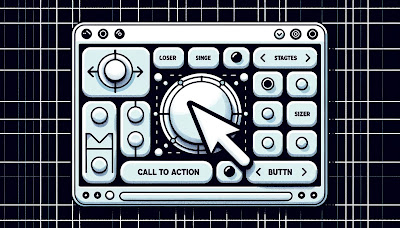Fitt's Law: The Key to Intuitive Product Design

In the world of product design, there's a golden rule that designers swear by: Fitt's Law. But what exactly is it? And how can understanding this law lead to the creation of more user-friendly products? Let's dive in. What is Fitt's Law? At its core, Fitt's Law is a principle of human-computer interaction. It predicts the time it takes for a person to point at a target area, like a button or link, based on the size of the target and its distance from the starting point. In simpler terms: the larger and closer a target, the faster it is to click on it. Paul Fitts, the psychologist behind this principle, introduced it in the 1950s. While it was initially applied to physical movements, like reaching for objects, it's now a cornerstone in the digital design world. Why is Fitt's Law Important in Product Design? User Experience (UX) Enhancement: The primary goal of any product designer is to create a seamless user experience. By understanding and applying Fitt...
